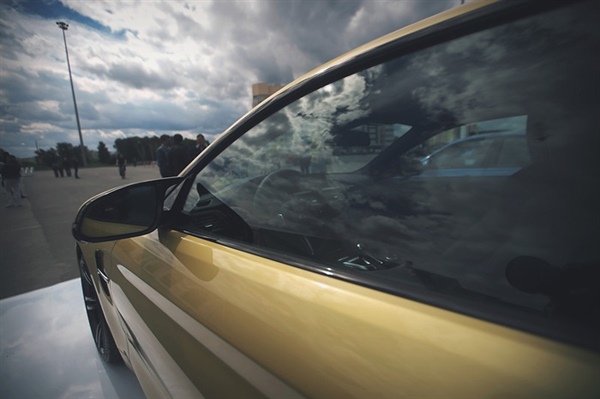How does Auto Glass Tinting Affect Visibility and Safety?

Tinted auto glass can transform your driving experience by striking a balance between comfort, style, and safety.
From reducing harsh sunlight on a bright afternoon to managing the glow of headlights at night, understanding how tint affects what you see behind the wheel is essential. At Kingdom Auto Glass in Hugo, MN, drivers frequently ask about the impact of tinting on visibility and overall road safety. Whether you’re curious about legal restrictions in Minnesota or interested in how different tint shades perform under varying conditions, this article will shed light on the key factors every motorist should know.
We’ll explore five critical aspects of auto glass tinting: the legal limits for tint darkness in Minnesota. If you’ve ever wondered how to strike the right balance between protection and clear sightlines, read on to discover expert insights and practical advice from Kingdom Auto Glass.
Legal Limits for Auto Glass Tinting in Minnesota
Under Minnesota law, any aftermarket tint on a passenger vehicle’s front side windows must allow at least 50 percent visible light transmission (VLT), and both side-rear and rear windows have no VLT restrictions. Reflectivity for all windows may not exceed 20 percent to prevent mirror-like glare.
Windshield tinting is generally prohibited except for original equipment tinting that complies with Federal Motor Vehicle Safety Standard 205. Many installers apply a non-reflective strip above the manufacturer’s AS-1 line (or up to six inches from the top), provided it does not reduce light transmittance.
Enforcement is carried out by law enforcement and inspection stations using calibrated tint meters. Violations can result in “fix-it” tickets or fines up to $100 for a first offense, with repeat penalties increasing accordingly. Medical exemptions are available for qualifying conditions, but drivers must carry physician documentation.
Glare Reduction Benefits of Auto Glass Tinting in Snowy Conditions
Snow on the ground reflects intense sunlight, creating blinding glare that can strain your eyes and obscure hazards ahead. Window films with moderate tint (30–40 percent VLT) reduce this reflected light, cutting glare by 20–30 percent and improving the contrast of road edges and obstacles.
Ceramic and carbon-based films excel in reducing winter glare, blocking up to 99 percent of UV rays and significant infrared heat while preserving true-color visibility. These spectrally selective films maintain a clear view even when the sun sits low on the horizon during Minnesota’s snowy months.
However, overly dark tints can impair light adaptation and reduce overall brightness inside the cabin. Research indicates that a mid-range tint (approximately 35 percent VLT) strikes the optimal balance between glare control and maintaining visibility in snow-covered landscapes.
Key Safety Considerations for Choosing Window Tint Darkness
The primary safety trade-off in tint selection is between glare reduction and preserved visibility.
Darker films cut more daylight but can delay visual recognition of pedestrians and road signs. Studies on dark adaptation show that heavy tints extend the time needed for eyes to adjust from bright to dim conditions, which can be critical in sudden light transitions.
Contrast sensitivity and peripheral vision also decline as tint darkness increases. Opt for spectrally tuned films that block UV and IR without overly reducing visible light transmission. Certified films with proper FMVSS 205 markings ensure that optical clarity and safety standards are met.
Beyond visibility, the choice of tint affects cabin temperature and UV protection. Darker tints can block up to 99 percent of harmful UV rays, reducing interior fade and skin exposure. Always verify that manufacturer certifications and local compliance labels back your chosen film to avoid legal or insurance issues.
Night-Time Visibility Effects of Window Tinting on Rural Roads
Rural roads often lack street lighting, making ambient illumination crucial.
Dark window films further dim the environment, reducing detection distance for wildlife or unlit roadside hazards. Research indicates that a 10 percent decrease in VLT can result in several feet of reduced visual range at night, leading to increased reaction times.
For drivers who frequently travel on poorly lit country roads, lighter tints (50 percent VLT or higher) are recommended. These maintain sufficient brightness while still offering glare control from oncoming headlights. Combining a modest tint with anti-glare headlamp bulbs can enhance overall night-time safety.
Consider using removable or switchable tint strips for the front side windows if you frequently alternate between urban and rural driving. This approach allows you to optimize visibility based on prevailing conditions without committing to a permanently dark film.
Insurance Implications of Tinted Auto Glass
Insurance providers view window tint as a vehicle modification that may affect visibility and accident risk. Non-compliant or excessively dark tints can lead to coverage disputes if visibility is cited as a factor in a claim. Some insurers require disclosure of tint installations and may adjust premiums accordingly.
If your tint violates Minnesota statutes, insurers can deny claims related to visibility-driven accidents. Keeping certification stickers and proof of legal compliance on file helps safeguard your coverage during renewals. Always install films through reputable shops to ensure warranty and insurance acceptance.
For policy guidance or potential premium reductions tied to UV-blocking safety features, consult with your agent. Professional installers provide compliance certificates that insurers recognize and often require during inspections.
Partner with Kingdom Auto Glass for Safe and Compliant Tinting
Kingdom Auto Glass offers expert installation of industry-certified window films that meet Minnesota’s legal standards and enhance visibility under all driving conditions. With over a decade of experience, our team ensures that your tint strikes a balance between glare reduction, UV protection, and clear sightlines.
Ready to upgrade? Call us at 651-440-2213 or contact us today for a free consultation.